Photo Essay: Rattlesnake Creek Dam Removal and Restoration
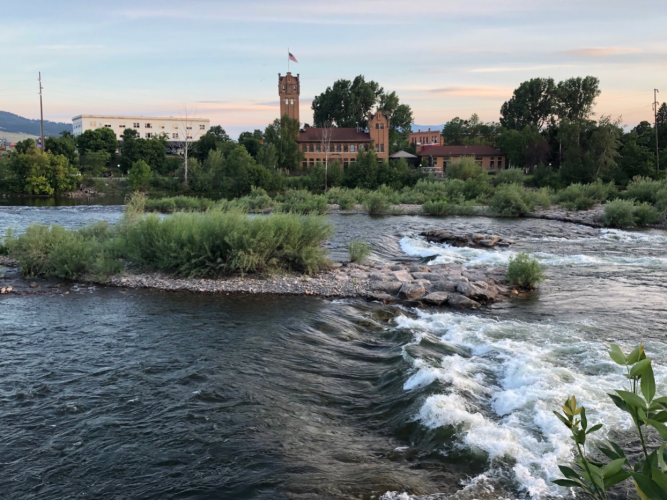 With support from the Open
Rivers Fund, a program run by the Resources Legacy Fund, our
Dams and Watershed Health team,
Heidi Ballard, Ryan Meyer, and Chris Jadallah traveled to
Missoula, Montana in July 2019 to observe and participate in
the environmental monitoring associated with the removal of
Rattlesnake Creek Dam. Through meetings and hands-on experience,
we got an up-close look at both the promise and the challenges of
monitoring collaborations focused on dam removal.
With support from the Open
Rivers Fund, a program run by the Resources Legacy Fund, our
Dams and Watershed Health team,
Heidi Ballard, Ryan Meyer, and Chris Jadallah traveled to
Missoula, Montana in July 2019 to observe and participate in
the environmental monitoring associated with the removal of
Rattlesnake Creek Dam. Through meetings and hands-on experience,
we got an up-close look at both the promise and the challenges of
monitoring collaborations focused on dam removal.
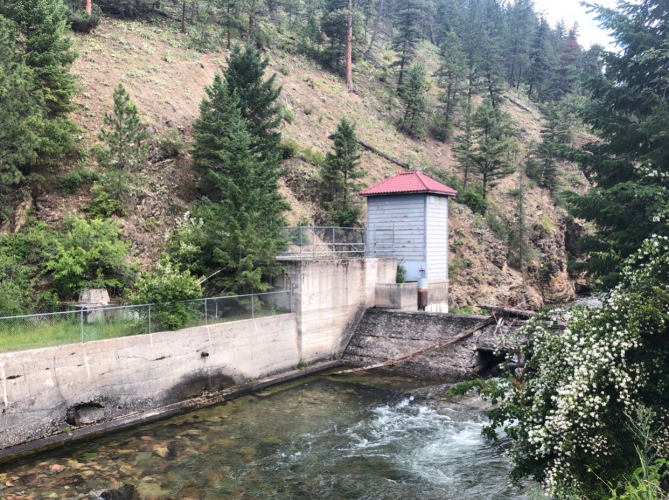 The Rattlesnake Creek Dam was originally built in
1904 to provide water for Missoula. However, the dam was
decommissioned in 1983 and structural damage constitutes a safety
hazard. Further environmental concerns such as the ability of
native fish to reach their spawning habitat prompted the dam
removal and creek restoration efforts. Organizations involved
with the dam removal plan to restore a vibrant watershed that
supports healthy ecosystems and communities.
The Rattlesnake Creek Dam was originally built in
1904 to provide water for Missoula. However, the dam was
decommissioned in 1983 and structural damage constitutes a safety
hazard. Further environmental concerns such as the ability of
native fish to reach their spawning habitat prompted the dam
removal and creek restoration efforts. Organizations involved
with the dam removal plan to restore a vibrant watershed that
supports healthy ecosystems and communities.
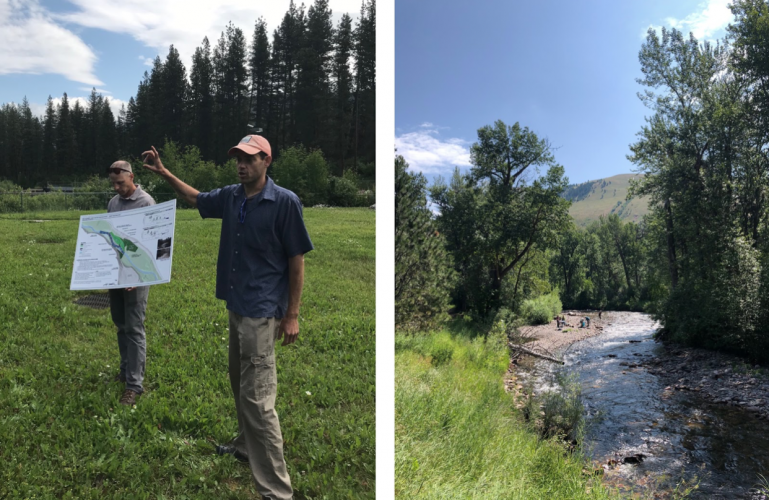 The dam is currently set to be removed by 2020 and
the restoration completed by 2021. The dam removal will allow
native, migratory fish such as the threatened bull trout to
return Rattlesnake Creek to spawn. Additionally, recreational
enhancements will benefit the local community by facilitating
improved access to open space.
The dam is currently set to be removed by 2020 and
the restoration completed by 2021. The dam removal will allow
native, migratory fish such as the threatened bull trout to
return Rattlesnake Creek to spawn. Additionally, recreational
enhancements will benefit the local community by facilitating
improved access to open space.
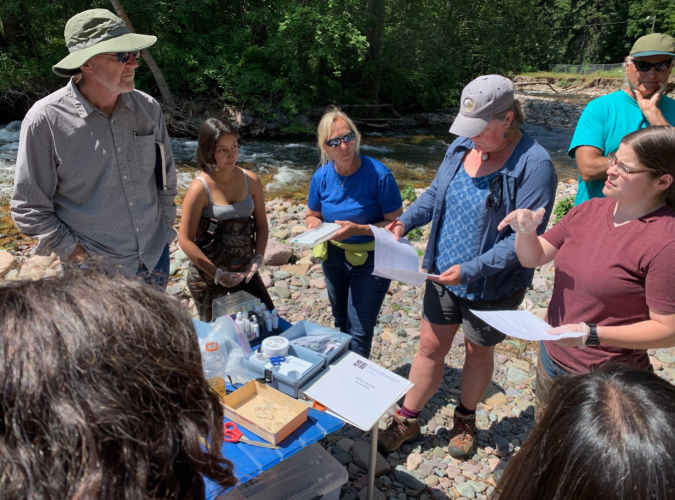 The City of Missoula, Montana Fish, Wildlife, and
Parks, Montana Trout
Unlimited, and Watershed Education
Network are working together to develop a monitoring program
to answer questions about how the dam removal impacts the
watershed. This project provides an interesting case study for us
to look at how partners are tackling the tricky challenge of
integrating professional and volunteer monitoring. Volunteers
learn how to evaluate biological, chemical, and physical
conditions and become stakeholders in the health of the riparian
ecosystem. Involving community members in environmental
monitoring can create powerful opportunities for place-based,
environmental science education and broader community impacts
tied to stewardship, civic action, and social learning.
The City of Missoula, Montana Fish, Wildlife, and
Parks, Montana Trout
Unlimited, and Watershed Education
Network are working together to develop a monitoring program
to answer questions about how the dam removal impacts the
watershed. This project provides an interesting case study for us
to look at how partners are tackling the tricky challenge of
integrating professional and volunteer monitoring. Volunteers
learn how to evaluate biological, chemical, and physical
conditions and become stakeholders in the health of the riparian
ecosystem. Involving community members in environmental
monitoring can create powerful opportunities for place-based,
environmental science education and broader community impacts
tied to stewardship, civic action, and social learning.
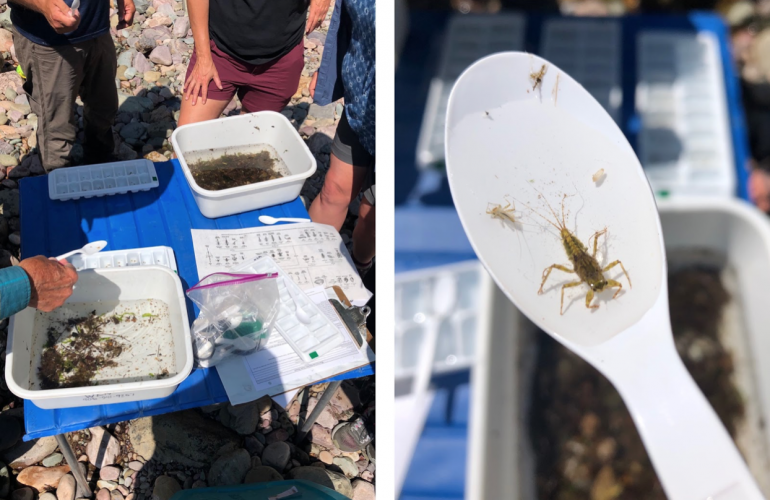 Macroinvertebrates, organisms that can be seen with
the naked eye and lack backbones, are an important food source
for native fish as well as a key indicator of stream health.
Mayfly nymphs, like the specimen pictured above, are one of many
macroinvertebrates that live in riparian ecosystems. Standardized
assessments by citizen scientists help track macroinvertebrates
over time. Scientists and conservation managers can then use that
information in their stream management decisions.
Macroinvertebrates, organisms that can be seen with
the naked eye and lack backbones, are an important food source
for native fish as well as a key indicator of stream health.
Mayfly nymphs, like the specimen pictured above, are one of many
macroinvertebrates that live in riparian ecosystems. Standardized
assessments by citizen scientists help track macroinvertebrates
over time. Scientists and conservation managers can then use that
information in their stream management decisions.
 Ryan and Chris take measurements of Rattlesnake
Creek. Measuring the physical dimensions of a stream, including
depth, width, and pebble/rock size can provide information on how
streams flow and how the dam removal will impact the stream
composition. Citizen scientists will take stream measurements at
regular intervals over upcoming years to track how the stream
conditions change over time.
Ryan and Chris take measurements of Rattlesnake
Creek. Measuring the physical dimensions of a stream, including
depth, width, and pebble/rock size can provide information on how
streams flow and how the dam removal will impact the stream
composition. Citizen scientists will take stream measurements at
regular intervals over upcoming years to track how the stream
conditions change over time.
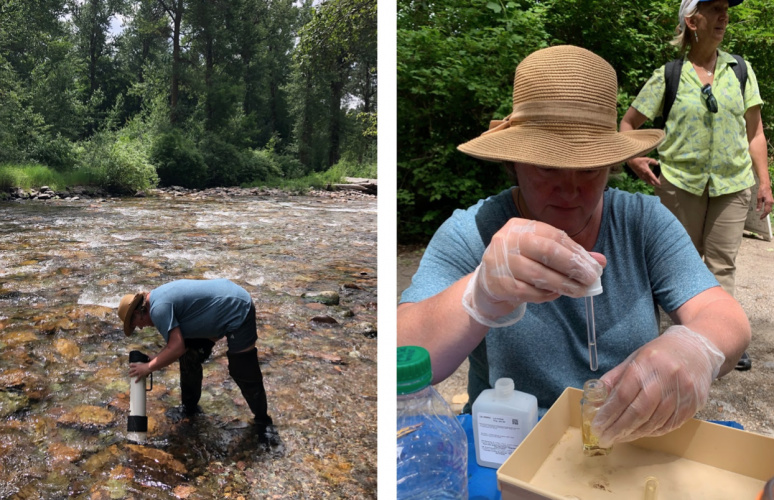 Heidi tests the water quality of Rattlesnake Creek.
The amount of oxygen in water is vital to the health of aquatic
organisms and water contamination has a direct impact on the
people, plants, and wildlife in the area. While trying out these
techniques, we discussed a variety of topics, such as learning
goals of the monitoring project, decision-making process that led
to their particular mix of methods and protocols, participant
training, and data quality control.
Heidi tests the water quality of Rattlesnake Creek.
The amount of oxygen in water is vital to the health of aquatic
organisms and water contamination has a direct impact on the
people, plants, and wildlife in the area. While trying out these
techniques, we discussed a variety of topics, such as learning
goals of the monitoring project, decision-making process that led
to their particular mix of methods and protocols, participant
training, and data quality control.
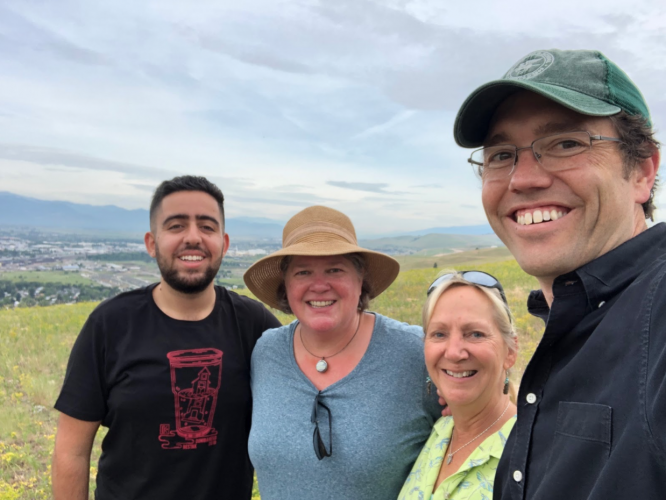 After participating in the Rattlesnake Creek Dam
restoration project, we came away with a greater understanding of
how partner organizations in Missoula developed and conducted
their environmental monitoring project and the different roles
professional and citizen monitors played in piecing together a
broad picture of environmental health. The trip also emphasized
the importance of complementary organizations working together to
achieve a common goal. We had a wonderful experience in Missoula,
taking away many important lessons for our ongoing work, and we look forward to
working with our awesome collaborators again!
After participating in the Rattlesnake Creek Dam
restoration project, we came away with a greater understanding of
how partner organizations in Missoula developed and conducted
their environmental monitoring project and the different roles
professional and citizen monitors played in piecing together a
broad picture of environmental health. The trip also emphasized
the importance of complementary organizations working together to
achieve a common goal. We had a wonderful experience in Missoula,
taking away many important lessons for our ongoing work, and we look forward to
working with our awesome collaborators again!
Special thanks to Mackenzie Carter, volunteer with the Center for Community and Citizen Science, for developing this photo essay.








